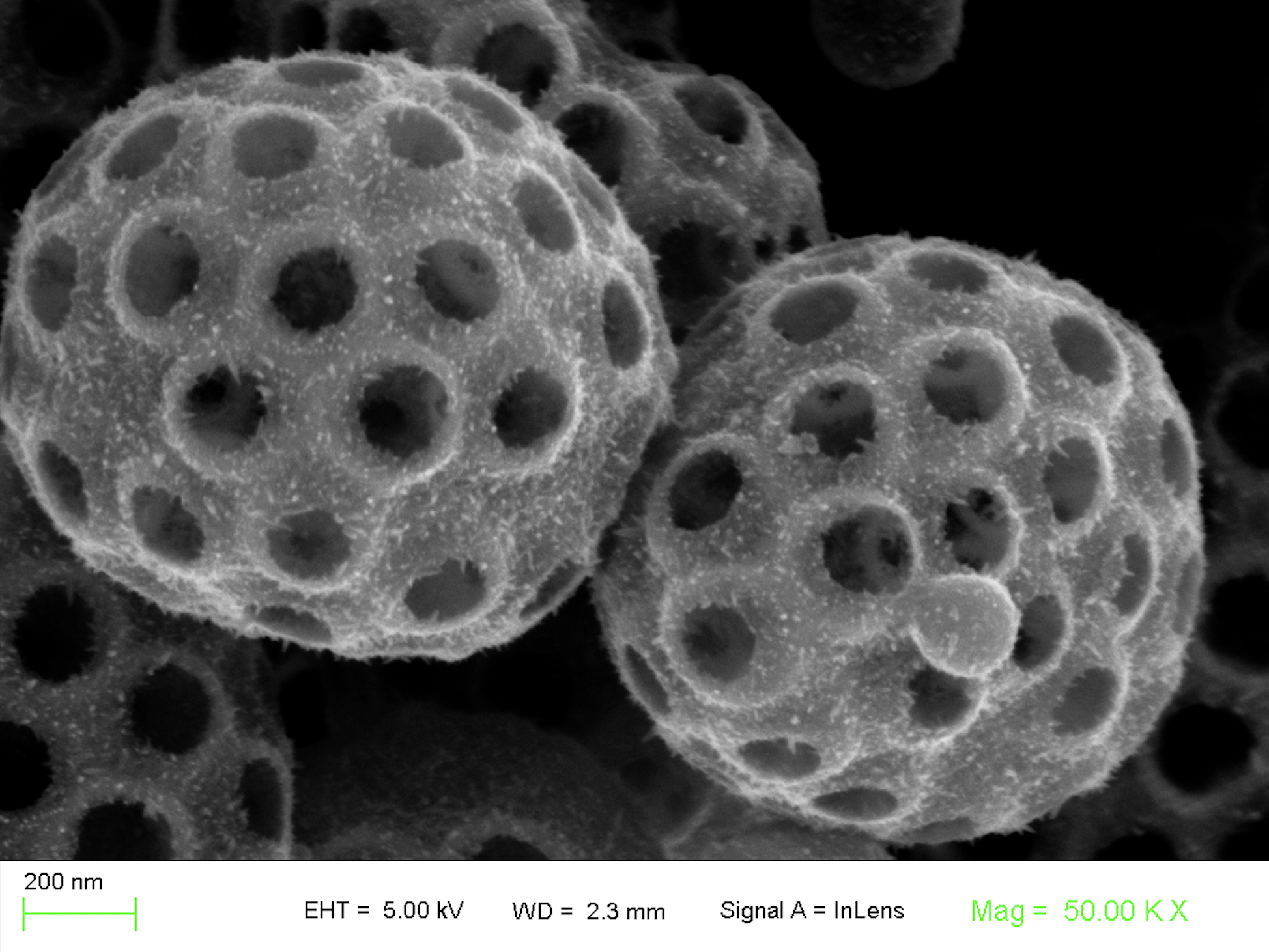We engineer nanochemistry, colloidal self-assembly and lithography to fabricate hierarchically inorganic structured materials. Depending on the nature of the building blocks and of the confinement geometry different configurations can be obtained.
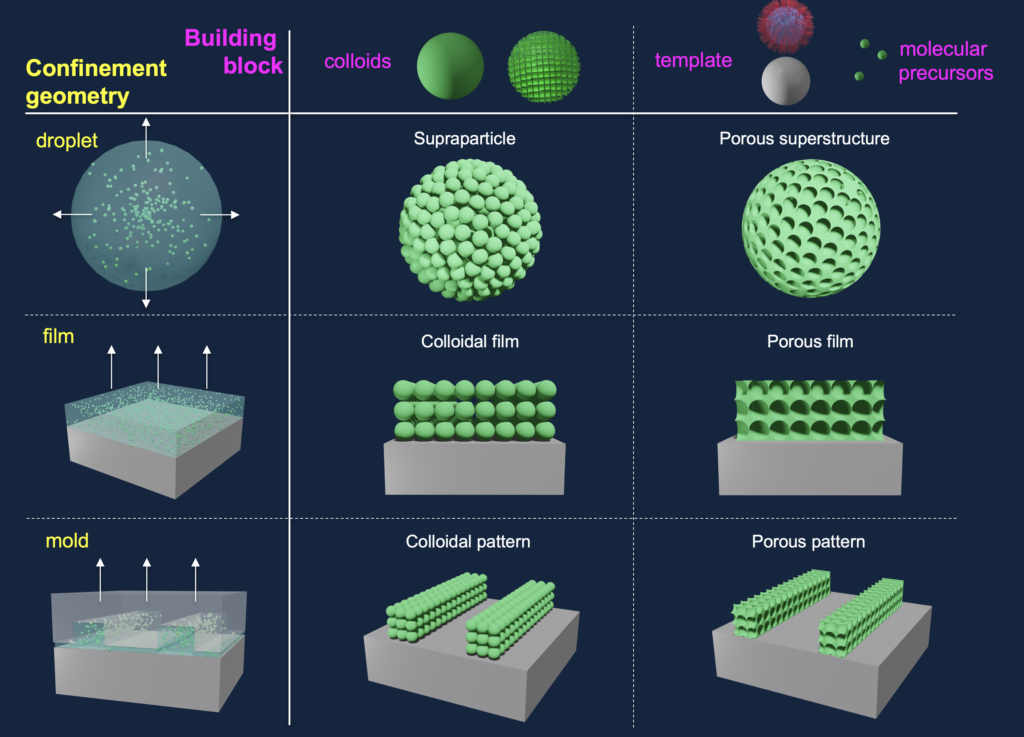
Related papers:
Periodic Nanoporous Inorganic Patterns Directly Made by Self‐Ordering of Cracks
M. Odziomek; F. Thorimbert; C. Boissiere; G. L. Drisko; S. Parola; C. Sanchez; M. Faustini, Advanced Materials 34, 2204489, 2022.
In this work, crack formation is harnessed to pattern porous inorganic films in a single step and without using lithography. Aqueous inks, containing inorganic precursors and polymeric latexes enable evaporation-induced, defect-free periodic arrays of cracks with tunable dimensions over several centimeters. The ink formulation strategy is generalized to more than ten inorganic materials including simple and binary porous oxide and metallic films covering a whole spectrum of properties including insulating, photocatalytic, electrocatalytic, conductive, or electrochromic materials. Notably, this approach enables 3D self-assembly of cracks by stacking several layers of different compositions, yielding periodic assemblies of polygonal shapes and Janus-type patterns.
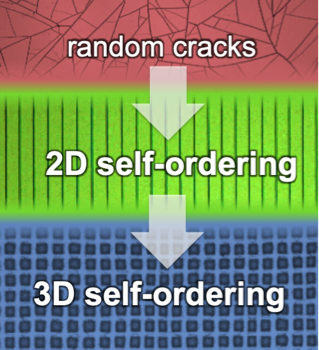
Block-Copolymers Enable Direct Reduction and Structuration of Noble Metal-Based Films
M. Gayrard; F. Chancerel; M. L. De Marco, D. Naumenko, C. Boissière; L. Rozes; H. Amenitsch; J. Peron; A. Cattoni; M. Faustini, Small 18, 2104204, 2022
Noble metal-based films, nanostructured at the 20nm scale, are obtained by solution processing by exploiting the dual functionality of block-copolymers as structuring and reducing agents. A multi technique in-situ study has allowed capturing the reduction/structuring mechanism occurring at the hybrid organic/inorganic interface. This approach is compatible with large scale patterning by nanoimprint lithography and enables easy integration of nanostructured metallic films into microfluidic reactors.
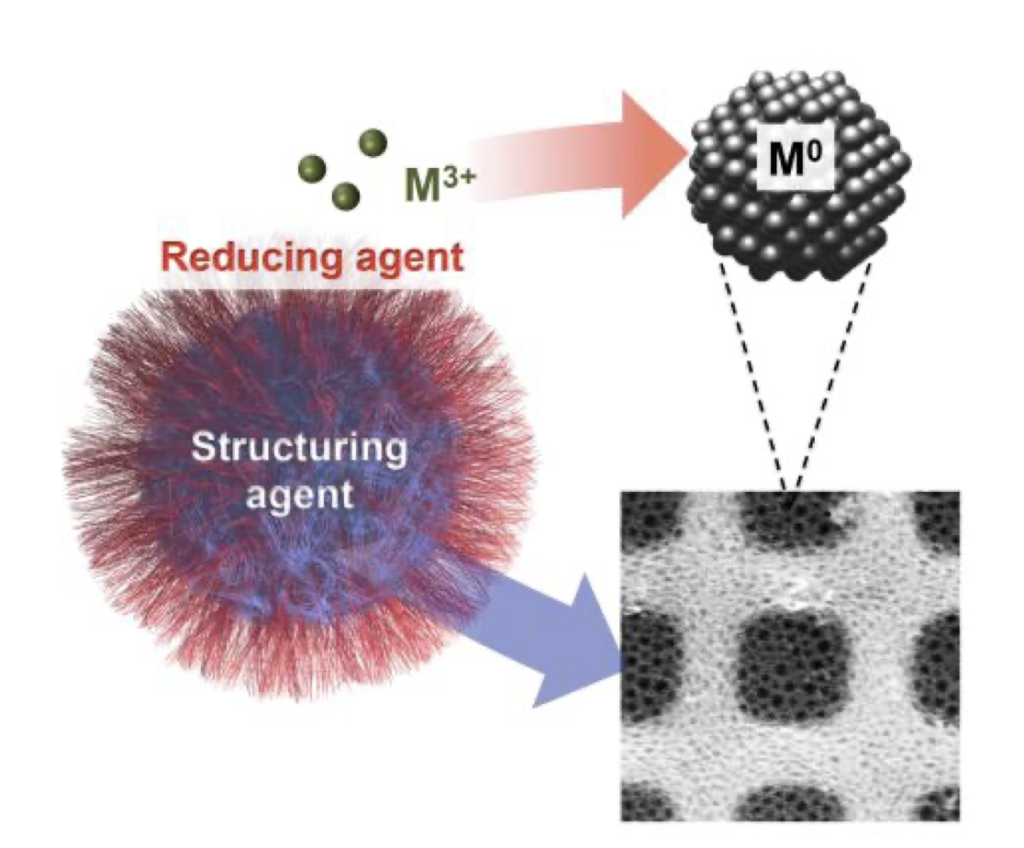
Replacing Metals with Oxides in Metal-Assisted Chemical Etching Enables Direct Fabrication of Silicon Nanowires by Solution Processing
M. Gayrard; J. Voronkoff; C. Boissière; D. Montero; L. Rozes; A. Cattoni; J. Peron; M. Faustini, Nano Letters 21, 5, 2310-2317, 2021
Metal-assisted chemical etching (MACE) has emerged as an effective method to fabricate high aspect ratio nanostructures. This method requires a catalytic mask that is generally composed of a metal. Here, we challenge the general view that the catalyst needs to be a metal by introducing oxide-assisted chemical etching (OACE). We perform etching with metal oxides that can be obtained by direct nanoimprint lithography or block-copolymer lithography from chemical solution on a large scale.
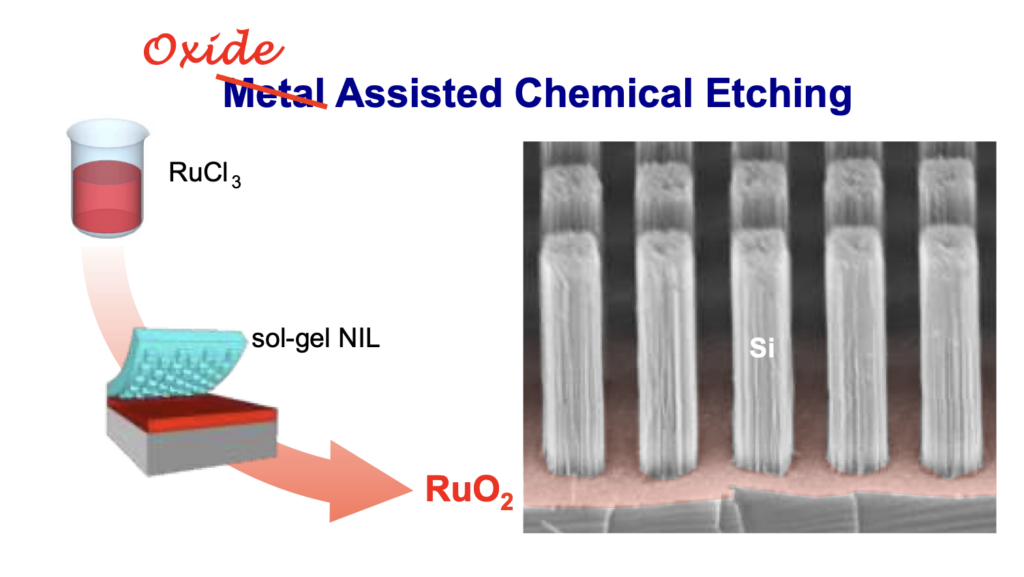
Aerosol synthesis of thermally stable porous noble metals and alloys by using bi-functional templates
M. Odziomek; M. Bahri; C. Boissière; C. Sanchez; B. Lassalle-Kaiser; A. Zitolo; O. Ersen; S. Nowak; C. Tard; M. Giraud; M. Faustini; J. Peron, Materials Horizons 1, 34, 2020.
Hierarchical nanostructured noble metals and alloys, with thermal stability up to 800 °C, can be fabricated by a high throughput, green and straightforward aerosol-assisted synthesis using bi-functional reducing templates. We unravel the reduction mechanism at the solid/solid interface at the single-particle level using state-of-the-art techniques such as in situtransmission electron microscopy, and in situ synchrotron-based X-ray absorption spectroscopy. We propose a mechanism based on a radical process thermally triggered by the depolymerization of organic components.

